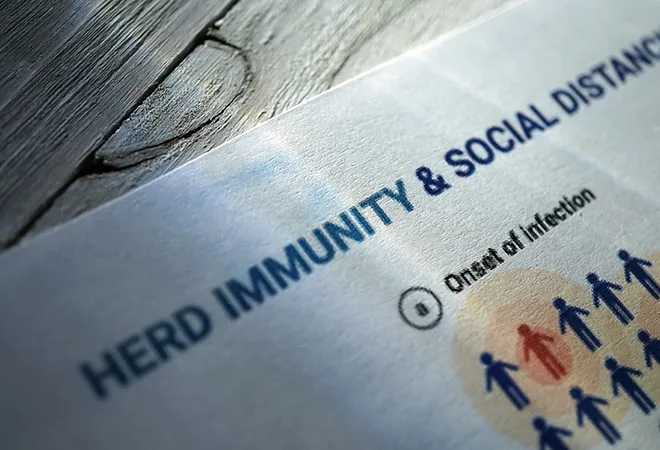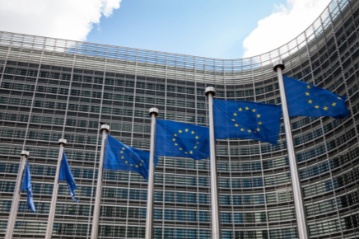
As COVID-19 cases continue to rise in the world, some countries have turned to a different approach to contain the spread of the disease. Herd immunity, the rather unusual method to solve the spread of the disease, has the world – and especially India – divided on its effectiveness. While a private lab in India suggested that 18 crore Indians have already developed immunity to the disease, others say that the use of the approach simply translates to the harsh reality of “survival of the fittest.” As the world relentlessly continues to search for a vaccine, countries are now desperate to try any means available. This has spurred a global debate on the controversial approach of herd immunity.
No signs of a cure
Although lockdown measures around the world have continued, it is now evident that they are not economically sustainable. Countries have to find a way to protect their citizens’ health and livelihood together — without having one at the cost of the other. How they can do that without a medically-approved treatment remains a big question.
By July 2020, scientists across the world conducted research on more than 150 drugs that were thought to cure the disease. Most of them were existing drugs that are used to treat other ailments such as Hydroxychloroquine, Remdesivir and Dexamethasone.
After several studies, the anti-malarial drug Chloroquine and its derivative (Hydroxychloroquine) have shown to be ineffective against COVID-19. Whereas, Remdesivir has not yet shown positive indications as to whether it could prevent COVID-19 deaths. Finally, Dexamethasone has emerged as relatively less ambiguous and the least controversial option compared to the other potential drug cures. However, it is reported that it cannot be used as a preventive measure and has not been confirmed to be effective in patients who do not require respiratory support.
Amidst this, the search for a vaccine against COVID-19 continues to remain tenuous. As the World Health Organisation (WHO) states that there are no particular vaccines for the disease and those that are under study are showing insufficient results, the world is now trying to accept the fact that the arrival of a vaccine is going to take a long while.
Sweden: A Case Study for Herd Immunity
As the novel coronavirus spread across the world, Sweden took a bold step. When countries around it were locking-down, it decided to tackle the disease in a different way - Prime Minister Stefan Lofven never imposed a lockdown. Rather, he kept schools open, allowed large gatherings and permitted restaurants to function as usual, in the hope that the country’s citizens will develop “herd immunity” to the disease.
Herd immunity is an approach wherein a certain percentage of a population becomes immune to a fast-spreading disease, so that they can no longer infect others — in order to effectively slow the spread of the disease in due course. Herd immunity can occur when a large group of people infected by the disease build a natural immune response to it over time. Alternatively, a major part of a population can be given a vaccine so that they can acquire immunity to fight it. As the search for a vaccine for COVID-19 continues, use of the second method stands invalidated.
Although some might support Sweden’s bold decision, one cannot ignore the very high cost of the approach in terms of human life. Between the steps of letting a large part of the country’s population contract the disease in order for them to become immune to it, many of those who are vulnerable would have lost their lives. Was Sweden ready to sacrifice these lives in order for the herd immunity to work? Anders Bjorkman, a professor for infectious diseases at the Karolinska Institute in Stockholm, said, “They did not want to put it bluntly, but seeking herd immunity was always inherent in the Swedish strategy.” To back its rather bold decision, few representatives from Sweden’s Public Health Agency approximated in April that by early May, one-third of Stockholm residents would be immune to the disease.
Overtime, Sweden government’s decision to adopt herd immunity had an opposite effect. In June, data showed that Sweden had the largest number of cases and deaths as compared to all the other Scandinavian countries. Sweden even recorded the most deaths caused by COVID-19 per capita in all of Europe, as shown in data provided during a seven-day average between May 25 and June 02. An ongoing study on the effects of herd immunity – conducted by the Public Health Agency of Sweden – found that by late April, only 7.3 percent of Stockholm residents had developed antibodies to COVID-19.
Herd Immunity in India?
As per a Spanish study conducted in April-May 2020, only 5 percent out of a population of 60,000 developed antibodies to COVID-19. The study, which was also later published in the Lancet, believed that around 70-90 percent of a population should become immune so as to protect those who are not infected. The study concluded that the use of herd immunity to tackle the spread of COVID-19 seemed difficult at the current stage. With Sweden’s adoption of the strategy not quite working the way they anticipated, the effectiveness of herd immunity in controlling the pandemic has diminished.
Moreover, for countries whose population is large, herd immunity does not seem a viable option. Given that India is the 28th most densely populated country in the world, it would take a very long time (1119 days or roughly 3 years) for the majority of the population to develop immunity against the disease. This process could actually hasten the spread of community transmission and thus possibly cause an increase in deaths. Moreover, given the estimated time of three years for herd immunity to work, many believe that a vaccine is a better option as it can arrive much earlier. Furthermore, employing the strategy of herd immunity will only add to the burden of India’s overworked health system. It is also difficult to determine the average time for when a recovered person develops immunity.
A new study found that a region can achieve herd immunity at a lower rate of 43 percent, but as per another study, this is only possible in a region that is sparsely populated and India cannot be that region for obvious reasons. Indian scientists believe that even if a fraction of India’s population were to get infected or die during the herd immunity process, they would account to large numbers due to its population size.
Thus, herd immunity does not seem to be a viable option in India, given that variables such as population density and existing pressure on health infrastructure cannot be excluded when deliberating the use of this approach. India should not consider the use of herd immunity, a process whose outcomes are not guaranteed, but the loss of lives during it are.
The author is a Research Intern at ORF, Mumbai
The views expressed above belong to the author(s). ORF research and analyses now available on Telegram! Click here to access our curated content — blogs, longforms and interviews.




 PREV
PREV

